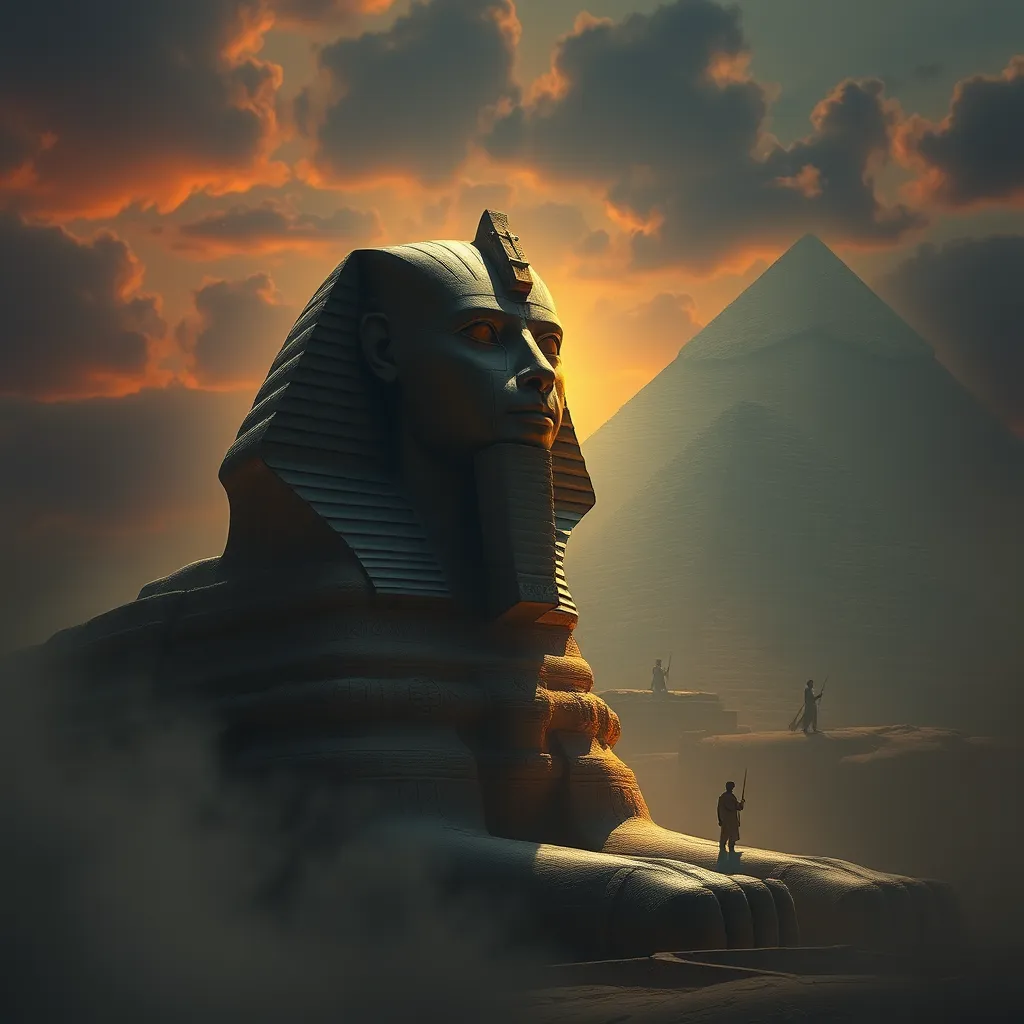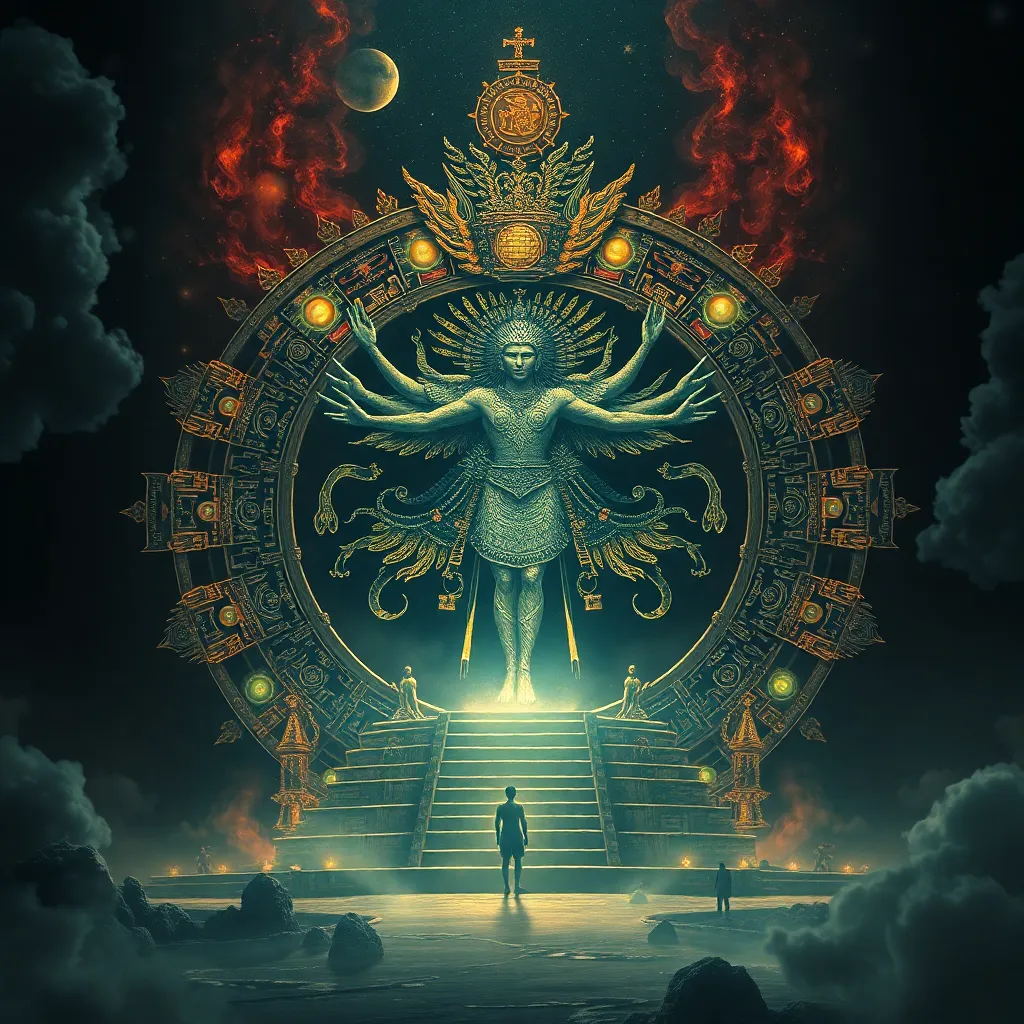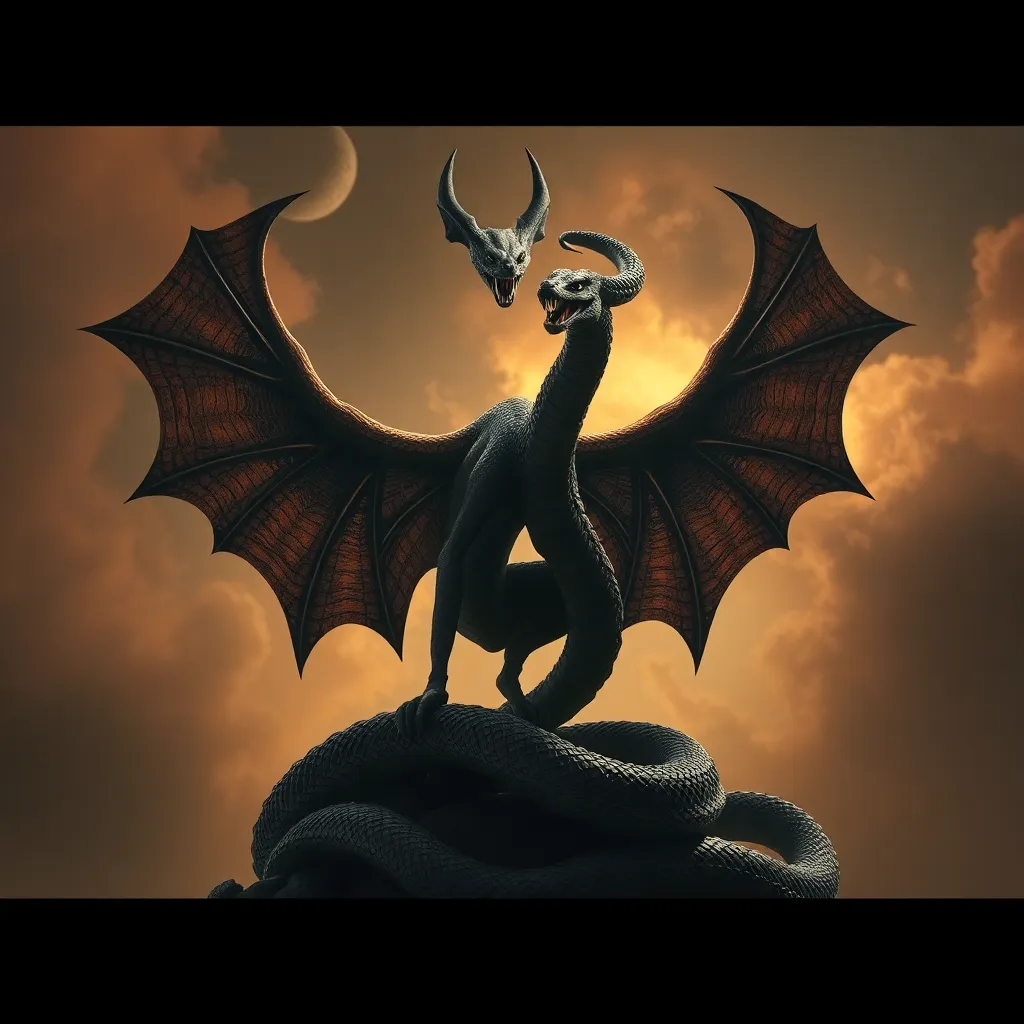The Sphinx and the Pharaoh: Stories of Divine Encounters
I. Introduction
The Great Sphinx of Giza is one of the most iconic monuments of ancient Egypt, standing as a sentinel over the Giza Plateau for millennia. This colossal limestone statue, with the body of a lion and the head of a pharaoh, embodies the essence of ancient Egyptian civilization, serving as both a guardian and a symbol of royal power.
Pharaohs held a unique status in Egyptian society, revered not only as rulers but also as divine beings. They were believed to be the intermediaries between the gods and the people, responsible for maintaining the order of the universe. This article explores the stories of divine encounters between the Sphinx and various Pharaohs, delving into the rich tapestry of mythology, history, and spirituality that surrounds these legendary figures.
II. The Historical Context of the Sphinx
The Sphinx was constructed during the reign of Pharaoh Khafre (c. 2558–2532 BCE) and is part of a larger funerary complex that includes the Great Pyramid of Giza. Its architectural significance is immense, showcasing the advanced engineering skills of ancient Egyptians.
- Construction and Architectural Significance: The Sphinx measures about 73 meters (240 feet) long and 20 meters (66 feet) high, making it the largest monolithic statue in the world. Its construction involved precise stone carving and alignment with celestial bodies.
- Symbol of Power and Protection: The Sphinx was viewed as a protector of the Pharaoh’s tomb, symbolizing strength and resilience. It was believed to ward off evil and safeguard the deceased in the afterlife.
- Myths and Legends: In ancient Egyptian culture, the Sphinx was associated with various myths, including its connection to the sun god Ra and the concept of rebirth. It was often depicted in texts as a guardian of sacred knowledge.
III. The Divine Status of Pharaohs
The divine nature of Pharaohs was a cornerstone of ancient Egyptian belief systems. This concept of divine kingship established the Pharaoh as a god on earth, endowed with powers that transcended mortal limitations.
- Divine Kingship: Pharaohs were considered manifestations of the gods, particularly Horus, the sky god. This divine lineage justified their absolute authority over the land and its people.
- Intermediaries Between Gods and People: Pharaohs performed rituals to communicate with the gods, ensuring prosperity and order. Their decrees were seen as divinely inspired.
- Rituals and Practices: Ceremonies such as the Sed festival reinforced the Pharaoh’s divine status, celebrating their role as the protector of Ma’at, the principle of truth and cosmic order.
IV. Notable Pharaohs and Their Encounters with the Sphinx
Several notable Pharaohs had significant interactions with the Sphinx, each encounter reinforcing their divine status and connection to the gods.
- Khafre: As the builder of the Sphinx, Khafre saw it as an extension of his divine aspirations. His likeness is believed to be carved into the Sphinx’s face, symbolizing his eternal reign.
- Thutmose IV: The Dream Stele of Thutmose IV tells the story of a prophetic dream in which the Sphinx revealed its identity and promised protection to the Pharaoh, emphasizing the Sphinx’s role as a divine guide.
- Ramses II: Known as Ramses the Great, he associated himself with the Sphinx to legitimize his reign. The Sphinx became a symbol of his divine favor and military prowess.
V. Interpretations of Divine Encounters
Ancient texts and inscriptions reveal the complex nature of the interactions between the Sphinx and Pharaohs. These encounters were rich with symbolism and carried significant implications for both the Pharaohs and their subjects.
- Texts and Inscriptions: Various inscriptions from temples and tombs depict prayers and offerings made to the Sphinx, showcasing its status as a divine entity.
- Symbolism of the Sphinx: The Sphinx represented divine guidance, protection, and the eternal bond between the Pharaoh and the gods. It was often seen as a harbinger of good fortune.
- Psychological and Political Implications: The association with the Sphinx bolstered the Pharaoh’s legitimacy and authority, reinforcing the idea that they were chosen by the gods to rule.
VI. The Sphinx in Modern Culture
The Great Sphinx has left a lasting impact on modern culture, inspiring countless works of art and literature.
- Influence on Literature and Art: The Sphinx has appeared in various literary works, from ancient texts to modern novels, often symbolizing mystery and enigma.
- Contemporary Interpretations: Today, the Sphinx is interpreted as a cultural icon representing the grandeur of ancient Egypt, sparking interest in its historical significance.
- Tourist Attraction: As a major tourist attraction, the Sphinx contributes significantly to Egypt’s economy and cultural identity, drawing millions of visitors each year.
VII. Archaeological Discoveries and Theories
Recent archaeological discoveries continue to shed light on the Sphinx and its historical context, enhancing our understanding of its significance.
- Recent Findings: Excavations around the Sphinx have uncovered artifacts and structures that offer insights into the rituals performed in its vicinity.
- Theories about the Sphinx’s Purpose: Scholars debate the Sphinx’s original purpose, with theories ranging from guardian of the Giza Plateau to a manifestation of solar deities.
- Challenges in Interpretation: The Sphinx’s age and erosion pose challenges for archaeologists, complicating the interpretation of its historical significance.
VIII. Conclusion
The Great Sphinx of Giza stands as a testament to the divine encounters between Pharaohs and the gods. Its significance in ancient Egyptian culture is profound, symbolizing power, protection, and divine favor.
Reflecting on the enduring legacy of these divine encounters, we see how they shaped the spiritual and political landscape of ancient Egypt. The Sphinx continues to captivate our imagination, inviting further exploration into the spirituality and mythology of this ancient civilization.
For those interested in delving deeper into the mysteries of ancient Egypt, further reading on Egyptian spirituality and mythology is recommended, offering insights into the beliefs that shaped one of history’s most remarkable civilizations.
https://www.youtube.com/watch?v=AhuPEp4ct6U



